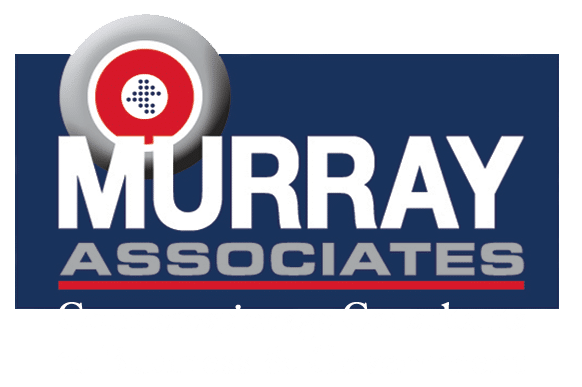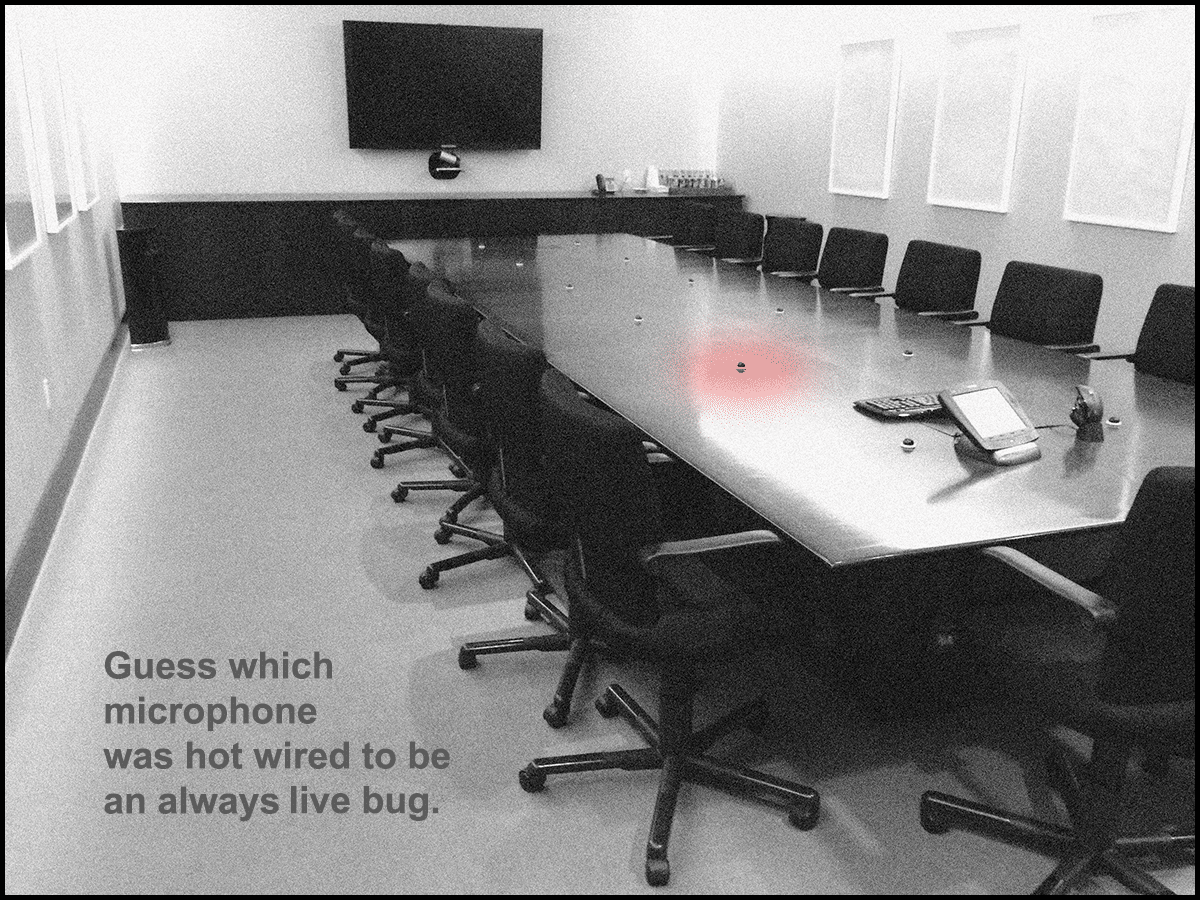“How Can You Tell if You, or a Room, is Bugged?”
How can you tell if you are bugged? The answer requires some thought. To uncover the truth we need to remove some myths and follow a logical path.
“You’re just being paranoid.” It’s a phrase that intimidates, shames, and scares. Too often, it sentences real victims of electronic surveillance, or bugging, to silent suffering. It’s also a phrase that can reveal unflattering things about the speaker, who may simply be ignorant, shallow, or mean, and who shows a strong tendency to avoid reality.
The fact is, other people cannot make your problems go away by telling you that they do not exist—and neither can you.
Life has taught all of us some very valuable lessons:
- An ounce of prevention really is worth a pound of cure.
- Trust your instincts.
- And that noise you heard coming from your car’s engine yesterday will not go away tomorrow; it will get worse.
Granted, some people really do have paranoia problems. But they usually do not confess to having a specific fear, or can describe specific events, such as receiving odd text messages on their cell phone or hearing verifiable background noises that were never there before.
People with imaginary problems express their concerns in more general terms, such as “They know everything about me” or “It’s been going on for years.” Regardless, these people need kindness and medical help, not name calling.
The vast majority of us, however, lead busy lives. Thoughts of being bugged and spied upon do not normally occur to us. We have too many real thoughts vying for our attention. There is neither time nor reason to dream up stories of omnipotent adversaries who know our every spoken word, thought, and move.
If suspicions of bugging are new to you and you have a suspect with a motive in mind, pay attention. Your intuition is telling you that something is wrong.
Murray’s Rule of Thumb
One incident is coincidence.
Two incidences are suspicious.
Three incidences are a confirmation.
Too many “coincidences” will tip your inner warning scale. Your subconscious is alert and will sound a real alarm. It’s just like the smell of smoke alerting you, (oops) you left food burning on the stove.
Trust your judgment.
Something is wrong.
This is how you can tell if you, or a room, is likely to be bugged.
If you have come to this conclusion the next question is, “What should I do about it?”
Conducting a search usually comes to mind first, but be careful, this may not be the best first step.
The search techniques used to find electronic surveillance bugs can be divided into two groups, Personal and Business / Government.
“I Can Tell I am Being Bugged.”
This is the Personal category. This type of suspicion usually involves an individual’s residence and/or transportation.
The most common concerns encountered involve spying conducted by: significant others, landlords, neighbors, or friends. Jealously, tracking, harassment, video voyeurism and general snooping, are the most cited concerns individuals have.
The level of surveillance sophistication in personal cases is usually low. Suspicions are often raised because the spy gives themselves away: by poor tradecraft, dropping clues or outright bragging. These cases are pretty easy to solve. A little knowledge goes a long way in conducting a do-it-yourself personal bug sweep.
If your suspicion of being bugged or tracked is a personal one, please read Eavesdropping Snoops – The Average Person’s Guide to Stopping Them. There is no need to spend money on gadgets or a professional Technical Surveillance Countermeasures bug sweep just yet. The advice given will help you determine if you are being bugged. If so, it will also save you a lot of time spent searching by narrowing down where the bug might be and what type of bug you can expect to find.
Above all, avoid spending money on expensive bug detection gadgets. Their effectiveness is unpredictable, and they may leave you with a false sense of security.
If you are concerned about spy cameras and would like to learn how to discover them yourself, at home and in public places, enroll in Spycam Detection Training. It is an inexpensive, entertaining on-line video course which will teach you all you need to know to successfully conduct a debugging sweep for spy cameras.
“I Suspect My Business is Being Bugged.”
This is the Business / Government category. Suspicions about being bugged are a bit more complicated than the Personal kind. Advanced TSCM technology and expertise is required to solve this issue. The exact inspection procedure used will depend on the category of bug sweep.
The most common Technical Surveillance Countermeasures (TSCM) bug sweeps are:
- Scheduled TSCM inspections (quarterly and biannually inspections are the norm)
- Emergency TSCM inspections (when a device is accidentally found or suspected)
- Off-Site Meeting TSCM inspections (hotels and conference centers)
- Transportation TSCM inspections (limousines, yachts and aircraft)
- Home Office / Residential TSCM inspections
In all cases, the search for electronic surveillance devices is not a do-it-yourself exercise.
A decision will need to be made about which type of TSCM specialist to employ. It could be an outside professional, or a properly trained and equipped in-house employee. The pros and cons of both choices are reviewed in In-House TSCM Bug Sweeps vs. Outsourced TSCM Bug Sweeps.
“How do I Schedule a Professional TSCM Bug Sweep?”
The scheduling process is essentially the same for most types of bug sweeps.
The first step is locating a competent TSCM specialist. This requires due diligence research by the concerned party.
Tip: Anyone can create a website, but few sites actually provide verifiable depth of experience and professional credentials.
Once a qualified TSCM specialist is located, make an initial inquiry from a safe area, using a safe form of communications.
The next step involves discussing your concerns, the scope if the inspection, and results expected from the TSCM debugging sweep. Once these are known, the TSCM specialist can provide a written estimate for services, and a service agreement to be signed. An appointment date and time for the bug sweep is then agreed upon.
Upon arrival, the client and specialist will review any last minute details.
Tip: Conduct these on-site discussions outside the area under suspicion of electronic surveillance.
We hope this answers your question, “How Can You Tell if You are Being Bugged?” If you have any other questions, or would like to discuss business/government level TSCM bug sweeps at your location, please let us know here.
###
You may also want to read…
-
How is a TSCM Bug Sweep Conducted?
-
What are the Benefits of Conducting a TSCM Bug Sweep?
-
How Much Do TSCM Bug Sweeps Cost?
###
Murray Associates is an independent security consulting firm, providing eavesdropping detection and counterespionage services to business, government and at-risk individuals.
Headquartered in the New York metropolitan area, a Murray Associates team can assist you quickly, anywhere in the United States, and internationally.
EXTRAS:
• More security tips, spy and privacy news at spybusters.blogspot.com. Sign up for the free email version.
• Concerned about Spy Cameras? Learn how to detect them.





